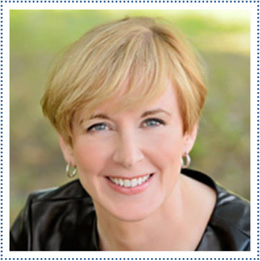Alexandra Asks: “We believe that our councilors should support affordable housing, but also have to help the public redefine what affordable housing looks like – not a four bedroom, four bathroom, rec-room etc..”
I support the work being done by the Prince Edward County Affordable Housing Corporation (PECAHC), particularly the recent secondary suites pilot. And while I’m sad to see Councilor Margetson step down from Council, I’m reassured by his appointment as Chair to PECAHC.
If I look at the PECAHC and County Foundation needs analysis, our principal requirement is for rental accommodation for singles and couples, particularly those who are older or wrestling with disabilities. At a recent presentation, Chuck Dowdall, the Executive Director of PECAHC reported that 750 affordable homes are on the way over the next 3-4 years, including 20 Tiny Homes.
One example is the upcoming Picton Disraeli Street project – 12 units, half bachelor apartments and half one bedrooms. Fifty per cent of the units are available to indigenous youth age 18-30 who are working in the County. I like this initiative for a number of objectives that it meets.
- The focus on helping people working in the community given the challenges our businesses have attracting and retaining staff
- It is helping people 18-30 who are among the most challenged finding affordable housing
- The size of the units meets the needs identified for singles and couples
- It is being done in partnership – in this case with the Mohawks of the Bay of Quinte
- And it represents a specific action supporting reconciliation with First Nations, not just words
Similarly Wellington’s Duke Dome of 36 units is coming – split between one and two bedroom apartments and one 3 bedroom. The existing HG McFarland Nursing home will be turned into 120 affordable units.
I am a firm believer in “gentle density” initiatives so would like to see planning encourage and incentivize smaller projects of 4 to 10 units and the conversion of single family homes into duplexes or triplexes for example. This last suggestion could help older residents stay in their homes and generate extra income. Gentle density will help us maintain the heritage and culture of the community, improve walkability (good for the environment) while meeting the critical need for affordable housing. Two opportunities to defray costs could be accessing the Green Municipal Fund which supports affordable housing using green building and grey water recycling techniques. This would not only offset part of the building costs but would also lower future utility costs (including water!!!!) as well as the environmental footprint. The County Foundation’s Vital Signs Project has been discussing developing an Environmental Social and Governance (ESG) scoring system – something I have some work experience in. This is a great initiative which could unlock funding from Social Impact investors.
CAUTION: NERD ALERT
Alexandra made reference to “defining affordability”. I’m a numbers person by training so I started to think about this. The County Foundation notes that the median after tax HOUSEHOLD income in the County is $72,000. This means that 50 per cent of households earn less than that and 50% of households earn more than that. Using Wealth Simple’s Tax Calculator I found that this would represent a before tax income of $98,000.
Then I went to RateHub.ca to determine what maximum mortgage someone could supposedly afford on that income. I used $72,000 as a down payment – one year’s after tax income. Ratehub asked for car payments; I used the Canadian national average for a used car of $419 (I have sources and links for all this if anyone is interested). Then it asked for a monthly heating bill so I used my own (3 bed, 2 bath house) of $163 per month. Ratehub also asks about other debts so I was thinking about young people and their student debt. I found the average is $26,000 at a rate of 2.5% (but I assume that is going to go up from here) so that gave me a $103 monthly payment. (Medical Students have the highest debt among students in the country – a key reason our bursaries paid to family physicians have to be competitive).
Plugging all this into Ratehub’s mortgage calculator it told me the maximum house price one could buy would be $507,390. The monthly payment would be $2,469 at a rate of 4.4% Note that because the down payment is less than 20%, $13,497 in CMHC insurance would have to be added.
Then I went to Realtor.ca to see what was available in Picton. As of October 8 there are 5 houses for sale at that price or less (out of 57) So based on these assumptions HALF of the 25,000 households in the County could only afford 5 out of the 57.
Our Council should be demanding more affordable housing in development proposals.


